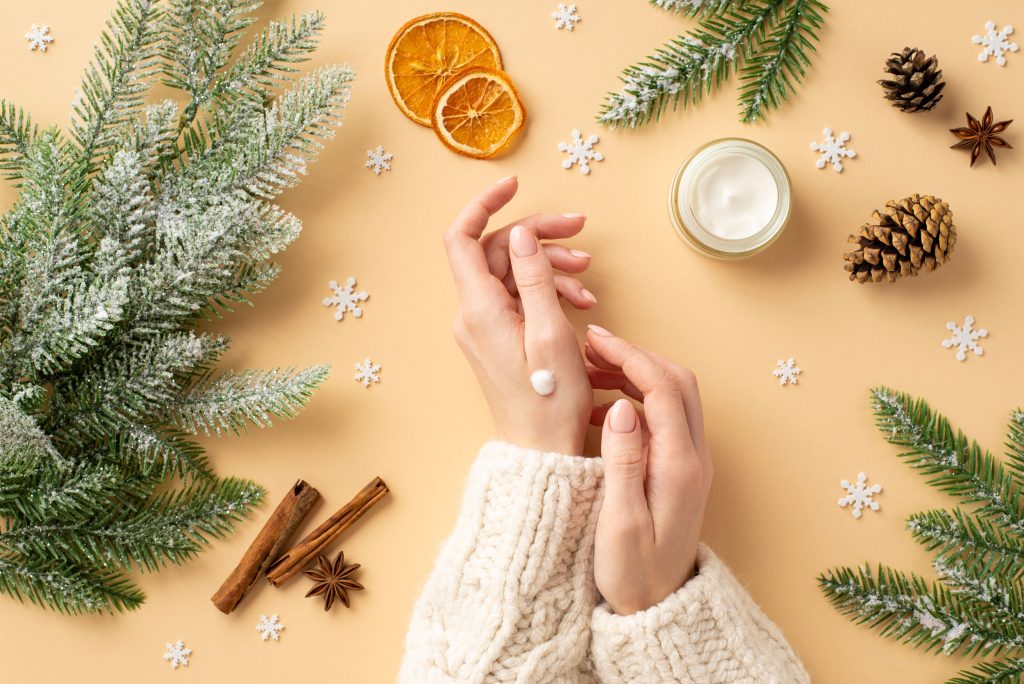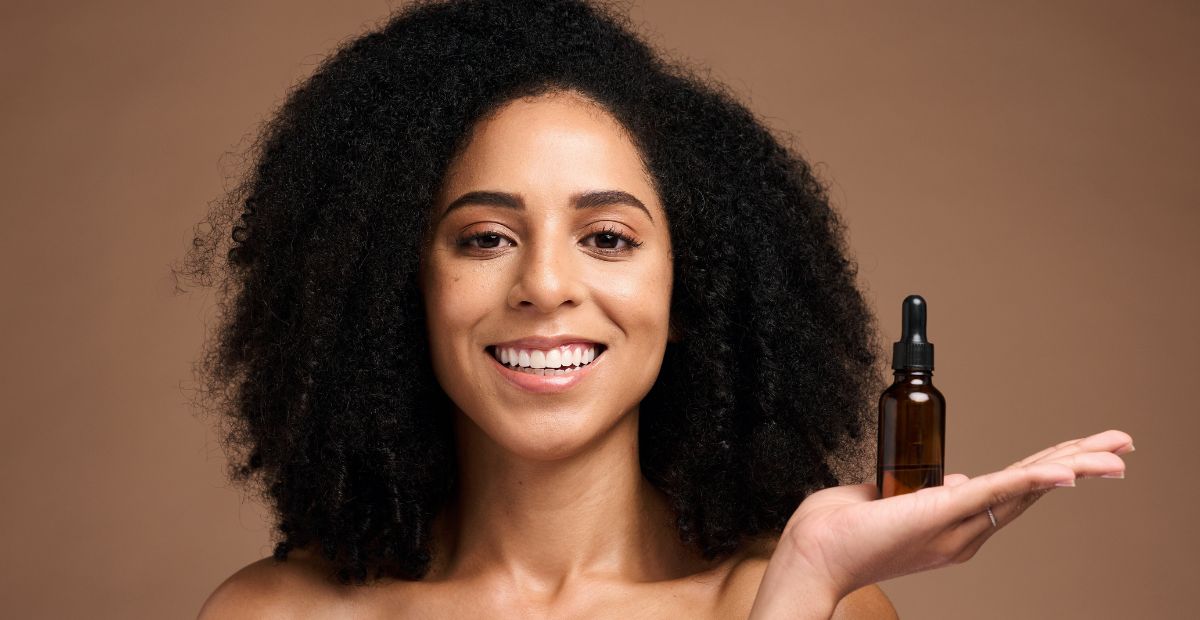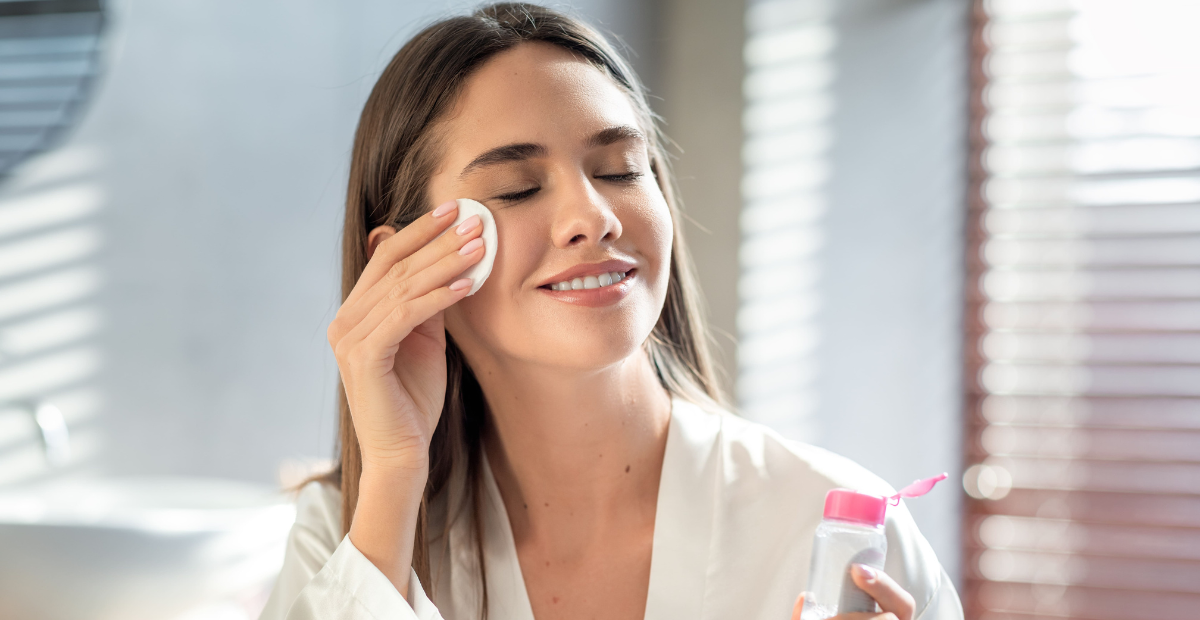Winter Skincare Tips: Essentials
Onskin Content Team
Your guides through the skincare chaos

Winter is coming, bringing Christmas spirit, presents, and the traditional annual rewatch of Harry Potter and Bridget Jones’s Diaries (you can’t help shooting a glance at Mr. Darcy’s iconic reindeer sweater once again). But along with festive cheer, this season brings harsh winds, heavy snowfalls, frigid temperatures outside, and dry heated air indoors. Together, they can harm your skin barrier and lead to skin problems, such as rashes, eczema, dryness, and acne. Let’s find out how to create an effective winter skin care routine to keep your body healthy and vibrant.
How Winter Affects Our Skin
Like any season, winter calls for a bit of special care for your skin. The cold, dry conditions outside can easily dehydrate it, leaving you with cracked lips and itchy, dry skin. Fine lines and wrinkles are also likely to become more noticeable.

Staying indoors as much as you can isn’t a way out either. While the heating keeps us warm, it doesn’t add any moisture to the air, making the environment even drier.
How to Protect Skin in Winter: Lifestyle Choices
To start with, these are four general tips to follow.
Use a Humidifier and Don’t Overheat Your Home
Dry indoor air can dehydrate and irritate your body. To combat this, try a humidifier. This simple tool will humidify the air, helping your skin retain its natural hydration and stay comfortable.
According to the American Osteopathic College of Dermatology, a 68-75°F (20-24°C) with the level of humidity around 45-55% is comfortable both for working and resting.
Cover Your Hands and Feet
In the chill of winter, our blood vessels near the surface of the skin constrict, redirecting blood flow deeper to keep vital organs like the brain and heart warm. While this helps keep our core temperature stable, it leaves our hands and feet feeling colder and more prone to dryness.
So, when you’re outside, expose as little skin as possible. Gloves are helpful to keep your hands away from the drying wind. And don’t forget to put a snood or a scarf on. Covering your neck and face even partially will create a barrier that keeps warmth in and reduces the impact of cold, dry air.

Stay Hydrated and Don’t Take Hot Shower Too Often
The next tip is obvious, but people often forget to follow it regularly. Consuming water and water-rich ingredients every day is essential to keep your skin hydrated from the inside.
On the contrary, don’t try to moisturize yourself from the outside too frequently. Approximately two-thirds of Americans take a shower every day, but for sure, the number of times you should do it depends on your lifestyle and circumstances. It’s more about following common sense, rather than strict rules.
What is more important, is the temperature of water. It may be tempting to spend some time under hot streams of water after a day in the cold, but your skin won’t say thank you for that. Hot liquid can wash away natural oils that help protect it. That’s the reason for you to always stick to warm water. Just remember one simple rule—if you have red skin when you step out of the shower, the water is too hot.
Don’t Drink Alcohol to Warm You Up
Liquors might make you feel warm at first, but in fact, they speed up heat loss by widening your blood vessels, making you lose body heat faster. Alcohol also dehydrates your body and may eventually influence acne development.
How to Protect Skin in Winter: Skincare Essentials
Now that we’ve covered some general tips, let’s dive into the specific winter skin care advice we’ve promised.
Apply Moisturizer After Shower
As we’ve just discussed, water takes out natural oils from your body, that’s why you need to replenish them. Use moisturizers just after a shower or bath to rehydrate skin and strengthen its barrier.
NB! Body and face moisturizers are not interchangeable. Facial skin is much thinner and more sensitive, that’s why face moisturizers are lighter and less likely to clog pores.
Effective ingredients to deal with dry skin include hyaluronic acid, glycerin, and shea butter, all known for their moisturizing properties. Petrolatum, though recommended by the American Academy of Dermatology Association, is a mineral oil. While these ingredients can provide rapid relief, mineral oils and petroleum-based ingredients may carry impurities unless they undergo a high degree of purification—an important detail you can’t find on the ingredient lists.

Another tricky task is to define comedogenic ingredients in moisturizers that can trigger breakouts. If you have oily skin, for instance, such ingredients as Theobroma Cacao Seed Oil, Acetylated Lanolin Alcohol, Isopropyl Myristate, and more can irritate it. This is because oily and combination skin naturally produce excess sebum, which can interact with certain ingredients and potentially trigger dozens of red dots on your face or body. However, other skin types can safely use these products without the same risk of irritation.
If keeping track of all this is too much for you, let the OnSkin app do the work. The app will analyze the ingredients of the product you’re using or going to purchase, evaluating its safety and how well it suits your skin type. No need to pore over tiny letters on the package or search for ingredient characteristics online. Just take a picture of the product or its barcode, and the app will give you all the details you need.
Use Sunscreen
Yes, you’ve heard it right. Even during colder months with less daylight, UV rays can still harm your skin’s protective barrier. Try to apply sunscreen each morning after your moisturizer.
Stick to sunscreen with a minimum SPF of 30 even in winter to protect your body.
Take Care of Your Lips
Cold weather often leaves our lips irritated, which can tempt us to lick them for quick relief. But eventually, this only leads to more dryness and even painful cracks.
To keep lips comfortable and hydrated, look for lip balms and lipsticks with protective ingredients like waxes, squalane, and ceramides. Plant-based waxes—such as carnauba, candelilla, and rice bran wax—don’t cause allergic reactions and are particularly beneficial. And just a reminder: be careful about using mineral oils here as well.

In case you get disoriented with a variety of ingredients and their quality, OnSkin will put everything in its proper place.
FAQ
-
Where do I start with OnSkin?
Download the app and think of a product you’d like to know more about. Then, go to the main screen and choose how you’d like to get the info —by manually looking it up in the search bar, by scanning its barcode, or by simply taking a picture of the packaging. Once you’ve done any of these, you can see how safe the product is and if it suits your skin or hair (if this analysis is available).
-
What is Safety Rating, and how is it calculated?
In OnSkin, we base product rates on ingredients. Each is closely studied by our medical team and then evaluated. This way, each product gets a score from 0 to 100, with 100 as the safest level.
Safety Levels
- Excellent (76–100)
- Good (51–75)
- Not great (26–50)
- Bad (0–25)
These scores are backed by the latest scientific studies. You can find links to the resources we’ve used on each ingredient page. To assess the safety of product ingredients, we evaluate them according to the following parameters/criteria
- Endocrine disruption risk / Reproductive toxicity
Indicates the probability of mimicking, blocking, or interfering with the body hormones.
- Сarcinogenicity
Measures the potential risk of inducing cancer.
- Allergy risk
Estimates the probability of an allergic reaction.
- High concentration alert
Determines the risk of being unsafe in certain amounts.
-
What is Skin Match?
Based on the info you input about your skin type, age, skin care goal, and other “settings,” OnSkin checks how well a product is tailored to your unique skin needs — it’s basically like a dermatologist helping you find the right products, minus the fees and the long wait. The product you’re checking might be labeled as It’s a match!, Hit-or-miss, or Not a match for you. The app also detects ingredient groups such as Anti-acne, Anti-inflammatory, Moisturizes, May be drying, Comedogenic, and others — by tapping one, you see exactly what ingredients from this or that group are in the product.
-
I seem to have a problem with using the app. Who should I contact?
Please reach out to us at [email protected], and we’ll carefully look into your issue. Your ideas for improving the app are also very welcome!
-
Do you have an Android version?
Not yet! Hey Android users, we hear you, and we're thinking about making an Android version, but we haven't started the development yet.
Tracker Sent!
It’s on the way to your inbox.




